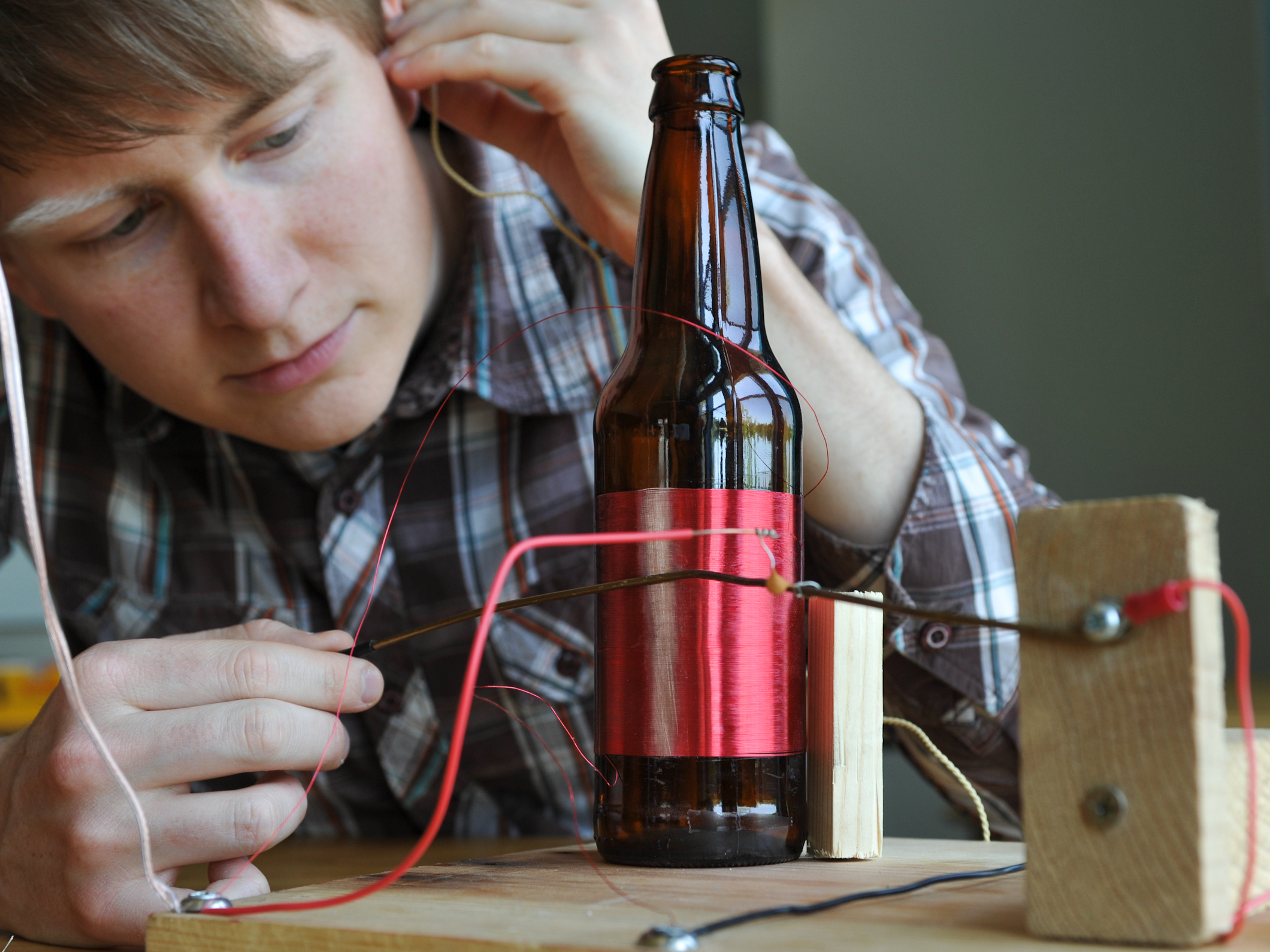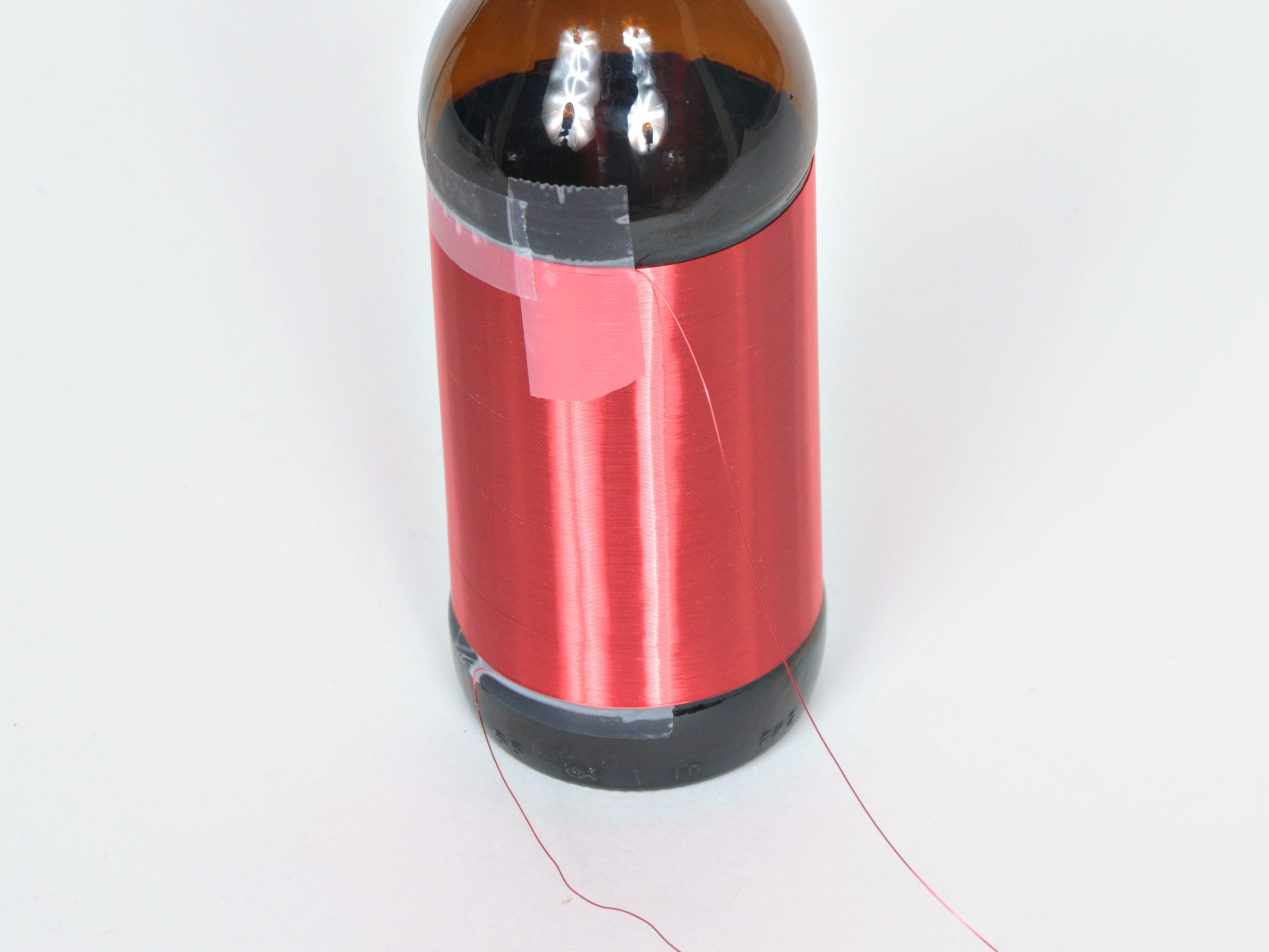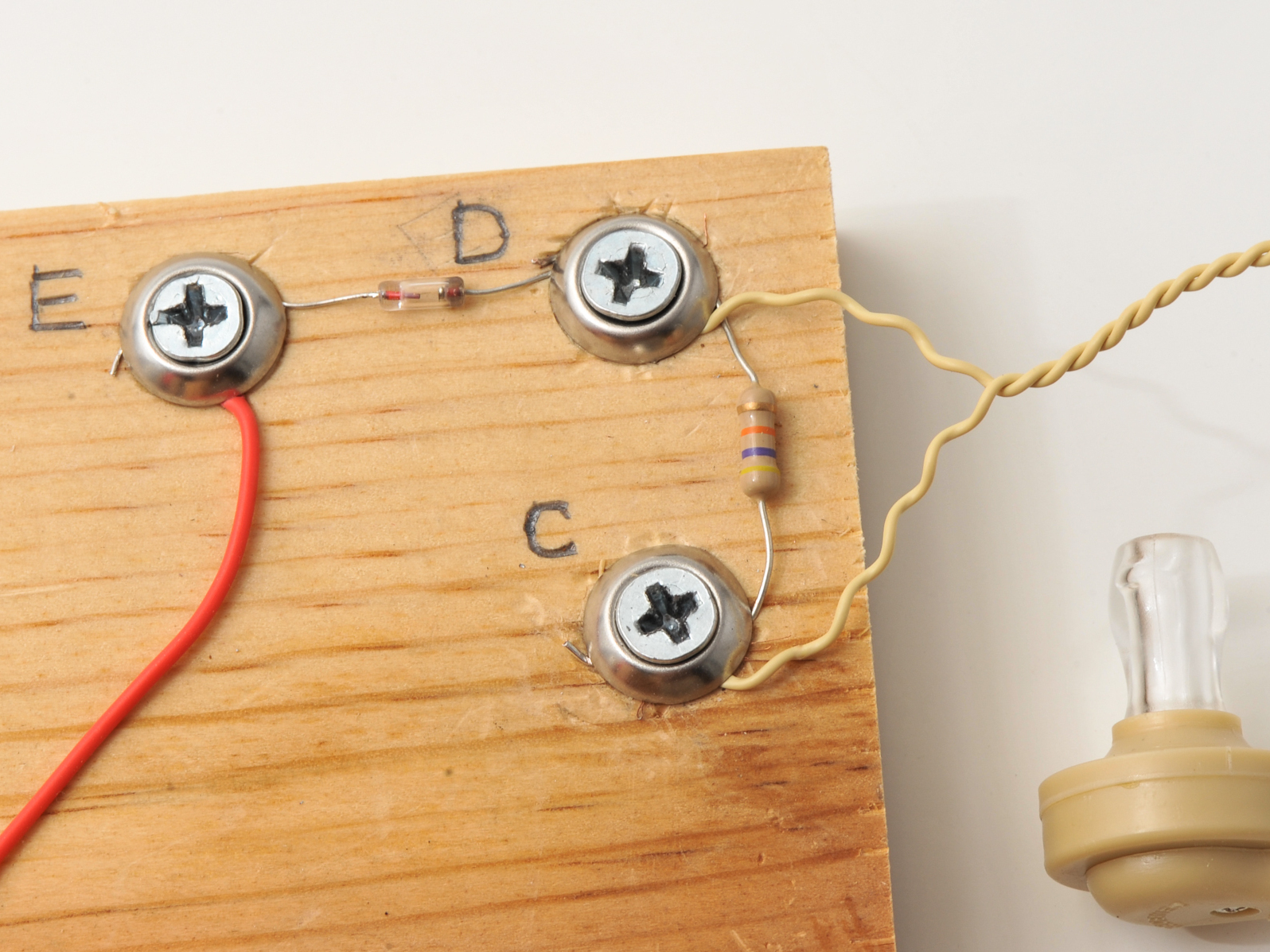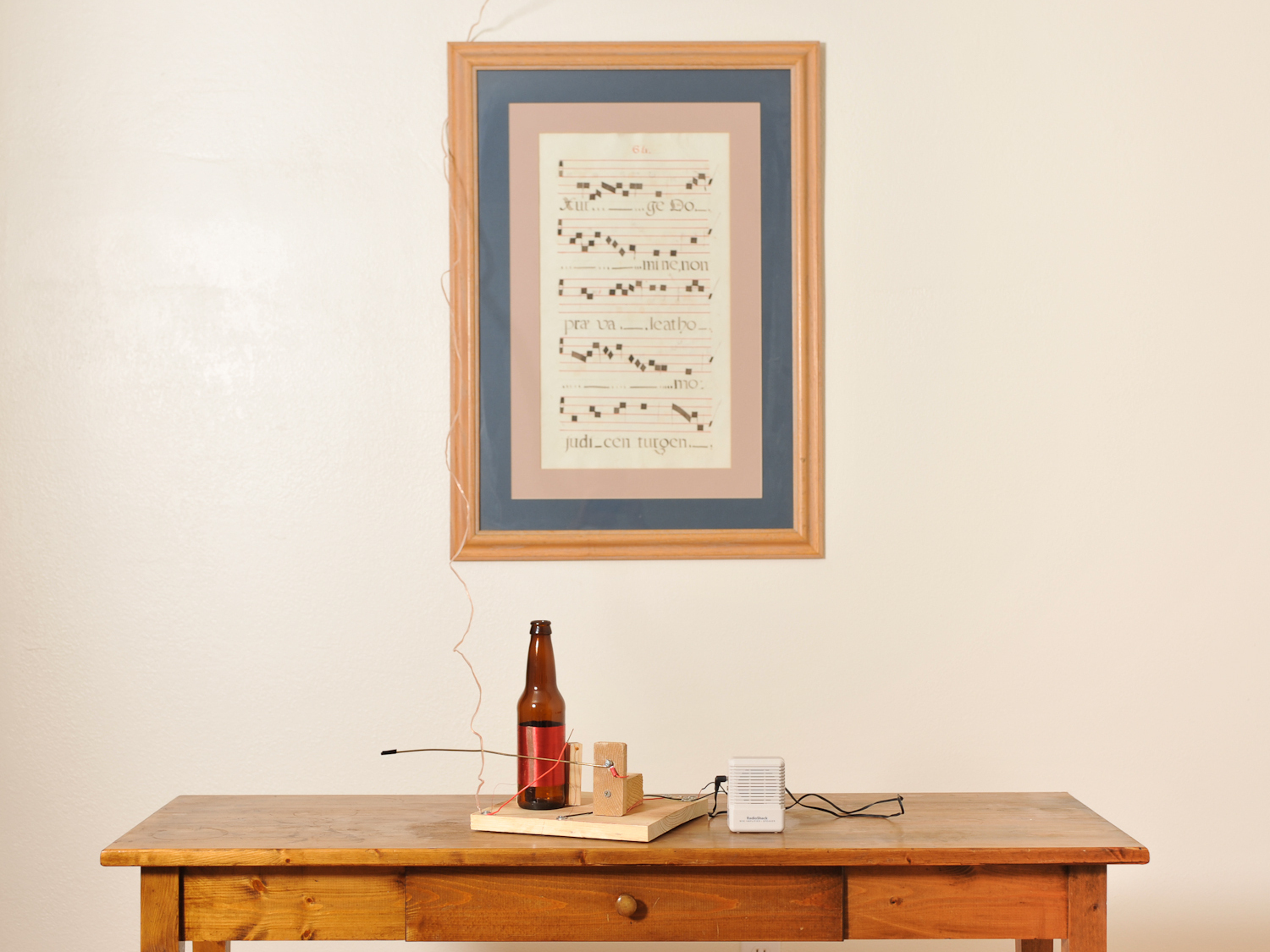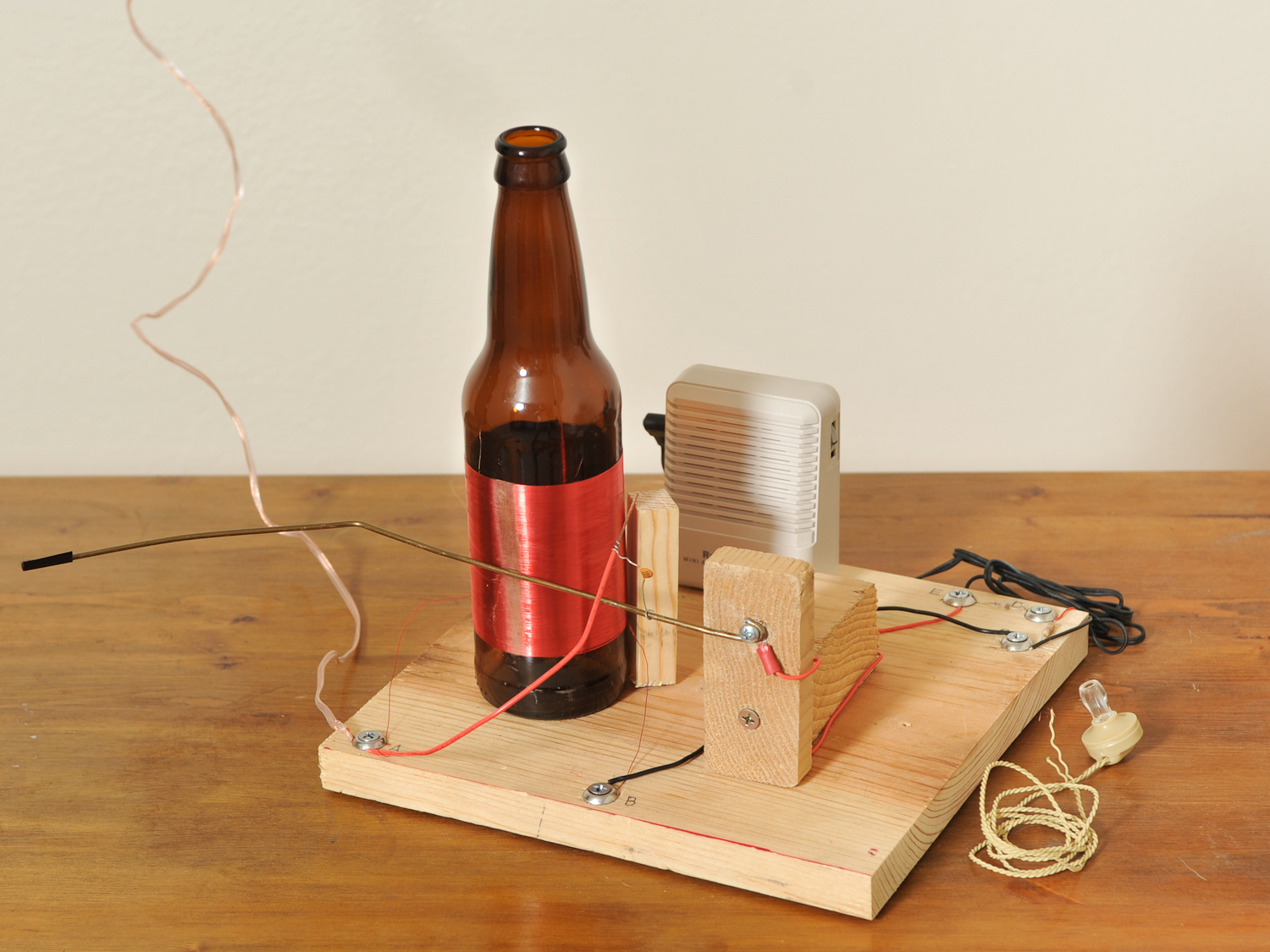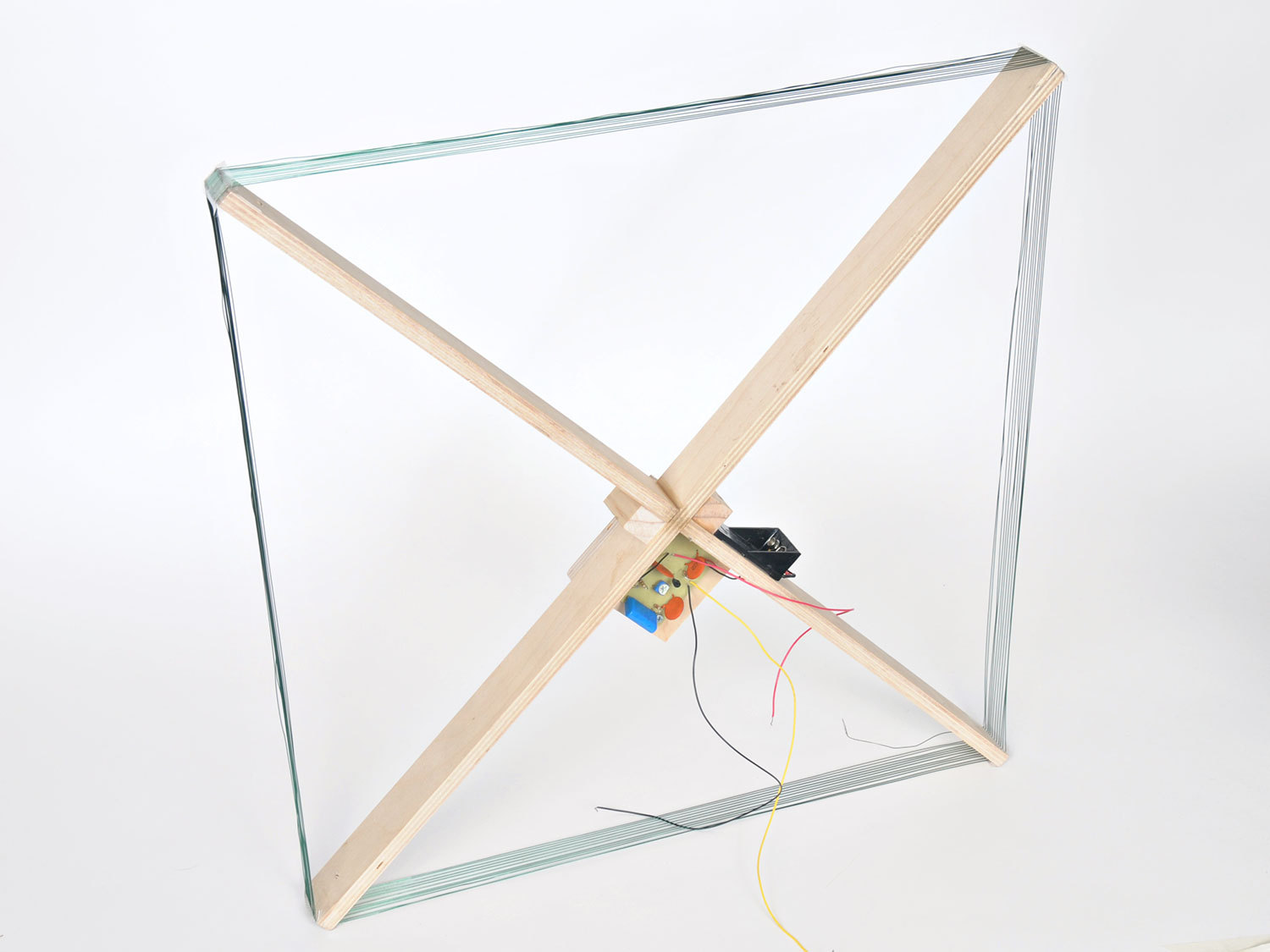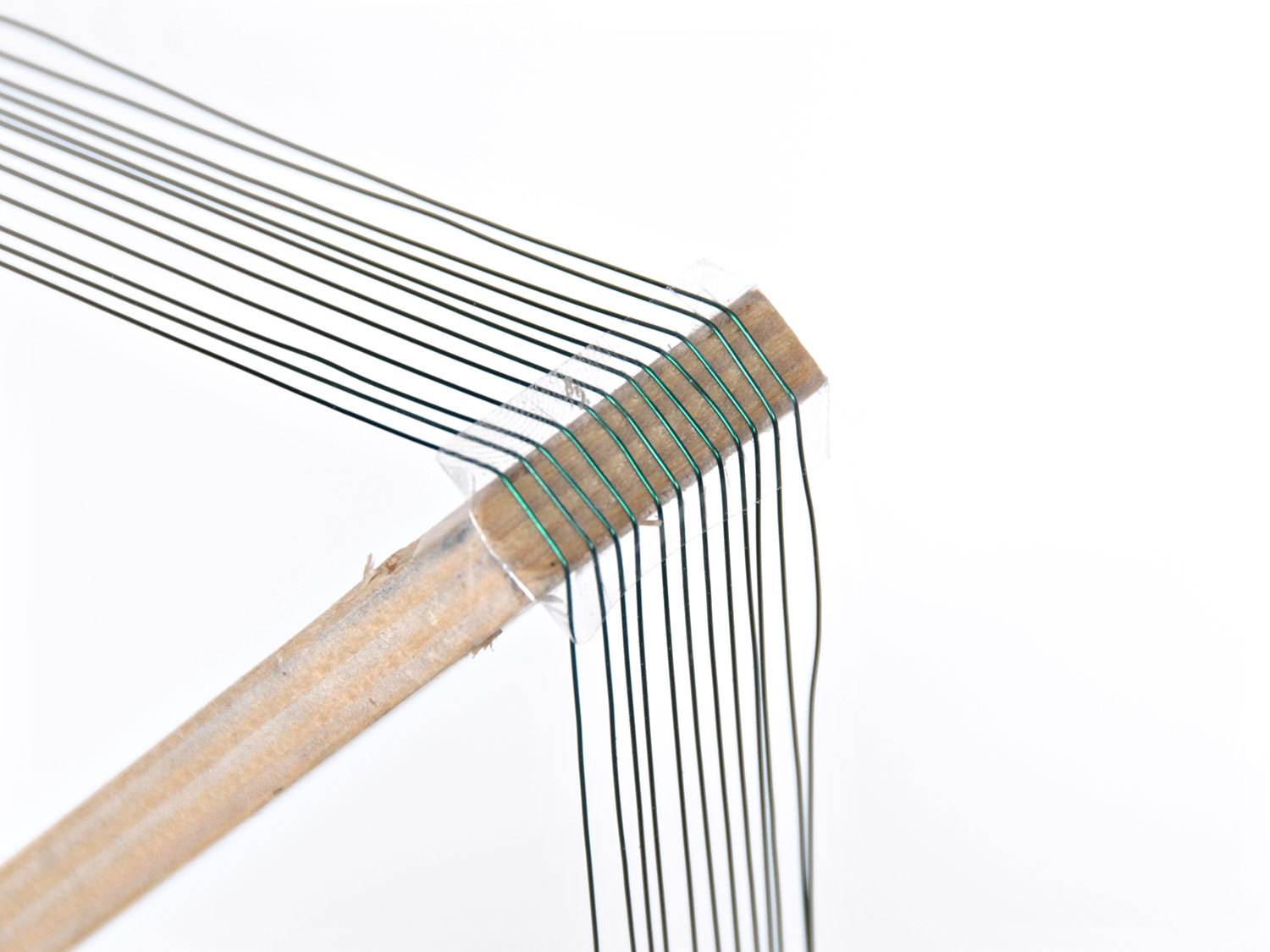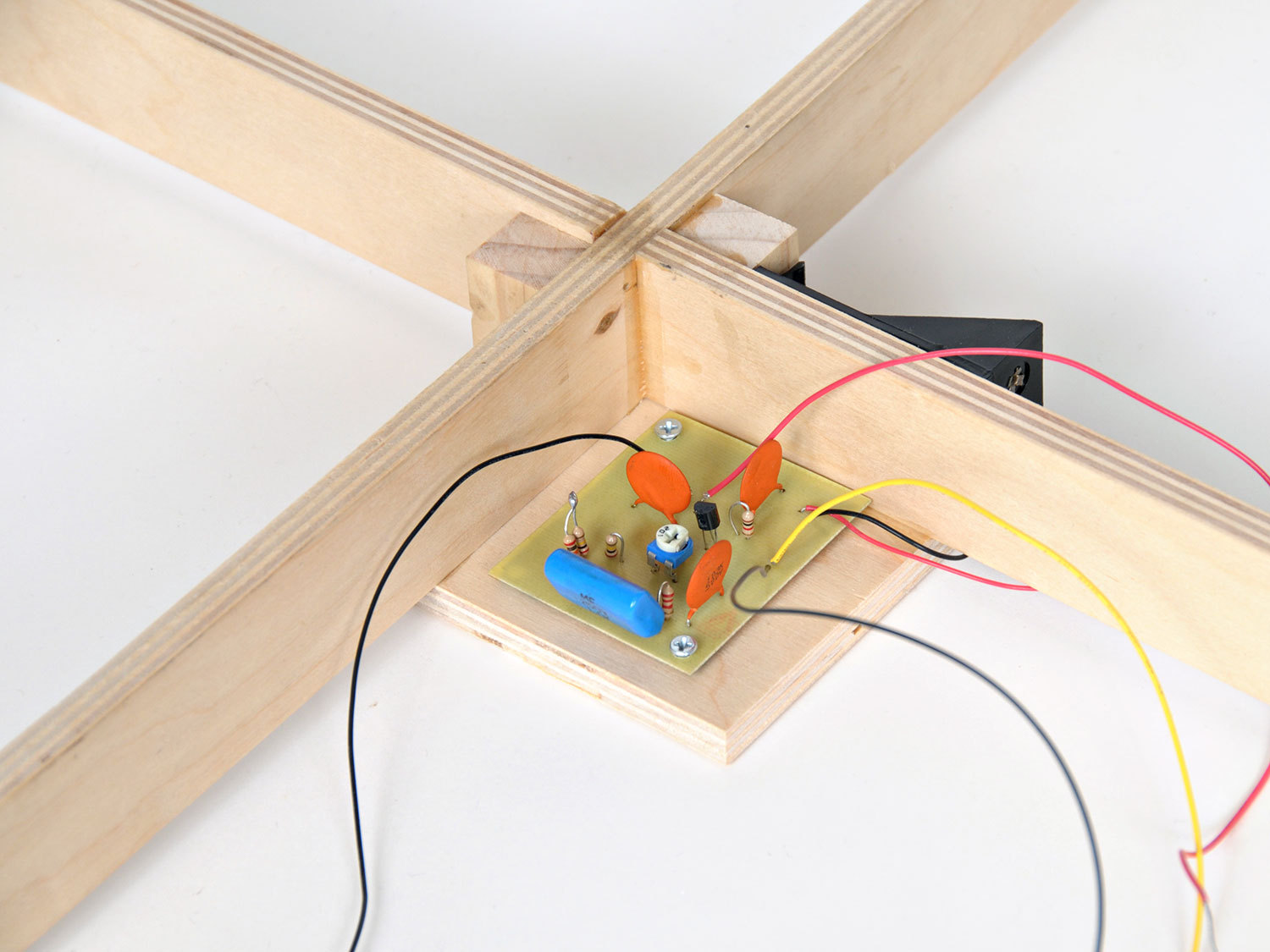
Crystal radio technology has been around for many years. This “bottle radio” take on a crystal radio requires no power source, operates on the power from radio waves, and receives signal from a long wire antenna. As radio stations slowly move away from the AM band, the “window of opportunity” to experience this remarkable technology is dwindling. On that note, the closer you are to an AM station or transmitter, the more likely you are to hear distinct radio waves with this project.
The “crystal” in question is contained inside a germanium diode, and is used to rectify the radio signal so that our ears can hear it. Since this project has no power source, the signal can be quite weak – crystal earphones are a fun way to hear low-amp signal (due to their sensitivity), or, alternatively, you could hook up a 9V mini-amplifier.
For more information on this battery-less technology check out this Wikipedia article.



